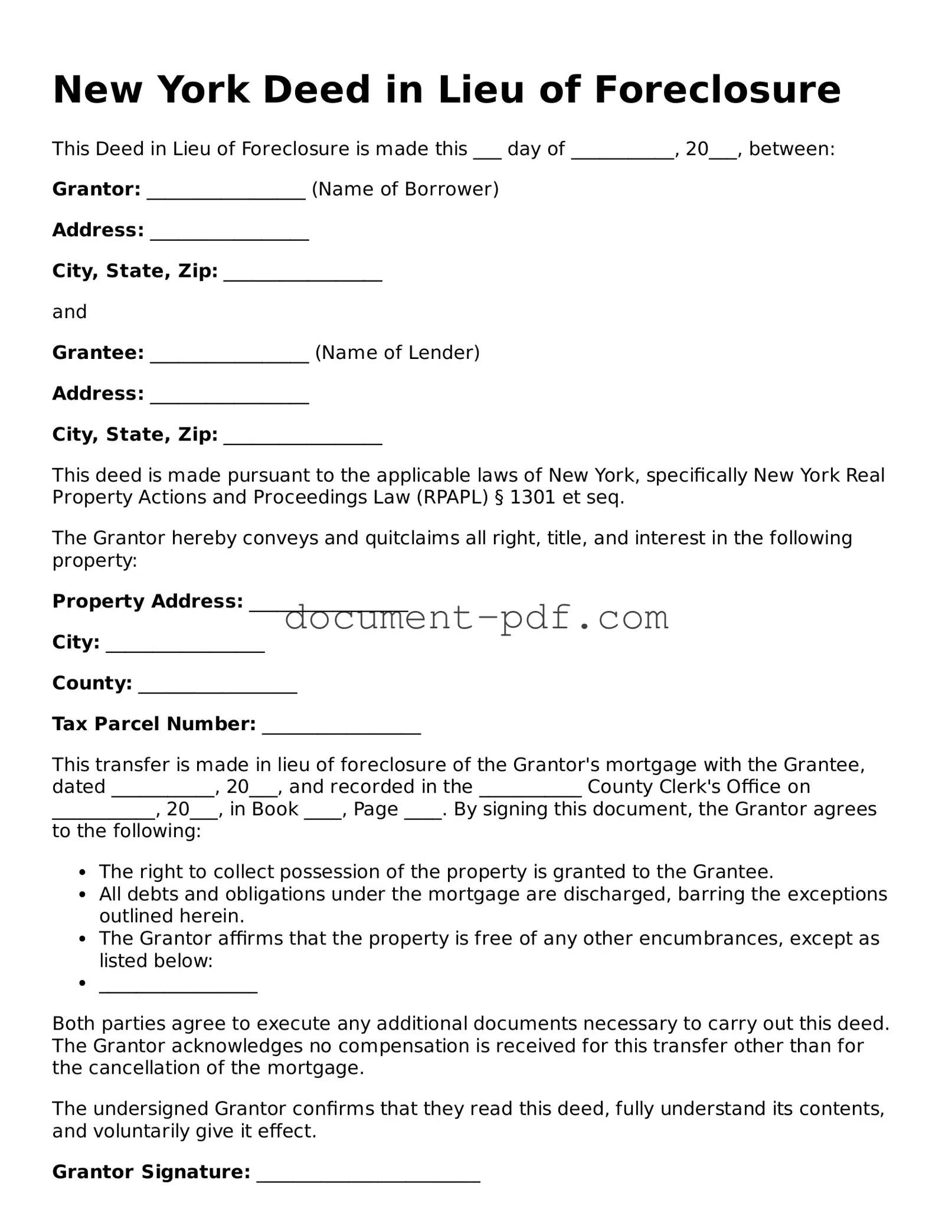New York Deed in Lieu of Foreclosure
This Deed in Lieu of Foreclosure is made this ___ day of ___________, 20___, between:
Grantor: _________________ (Name of Borrower)
Address: _________________
City, State, Zip: _________________
and
Grantee: _________________ (Name of Lender)
Address: _________________
City, State, Zip: _________________
This deed is made pursuant to the applicable laws of New York, specifically New York Real Property Actions and Proceedings Law (RPAPL) § 1301 et seq.
The Grantor hereby conveys and quitclaims all right, title, and interest in the following property:
Property Address: _________________
City: _________________
County: _________________
Tax Parcel Number: _________________
This transfer is made in lieu of foreclosure of the Grantor's mortgage with the Grantee, dated ___________, 20___, and recorded in the ___________ County Clerk's Office on ___________, 20___, in Book ____, Page ____. By signing this document, the Grantor agrees to the following:
- The right to collect possession of the property is granted to the Grantee.
- All debts and obligations under the mortgage are discharged, barring the exceptions outlined herein.
- The Grantor affirms that the property is free of any other encumbrances, except as listed below:
- _________________
Both parties agree to execute any additional documents necessary to carry out this deed. The Grantor acknowledges no compensation is received for this transfer other than for the cancellation of the mortgage.
The undersigned Grantor confirms that they read this deed, fully understand its contents, and voluntarily give it effect.
Grantor Signature: ________________________
Date: ___________________
Grantee Signature: ________________________
Date: ___________________
This Deed in Lieu of Foreclosure may be acknowledged before a Notary Public.
Notary Public: ___________________
Commission Expires: ___________________
